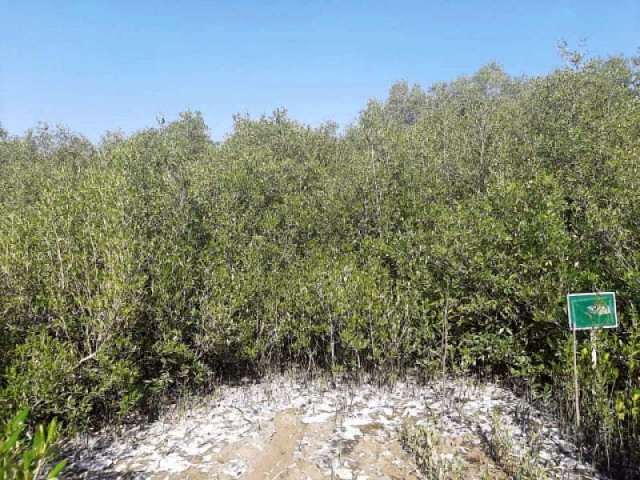Kakapir women lead mangroves’ protection
Once disappearing fast, mangrove forest in area now covers around 400 hectares of land

In Kakapir, a fishing village located around 15 kilometres to the West of Karachi, at least two dozen women spend their days planting mangroves- elongating and strengthening a natural wall against tsunami.
Leading the initiative to preserve the natural resource in the area, they realise that them having a secure future is linked to the presence of mangroves.
“It’s a valuable tree and we all need to protect them,” said 70-year-old Sughra Hajani, one of the women who have dedicated themselves to protecting mangroves in Kakapir village. “I plant them and ask people, [mostly men], to not cut them down,” she added.
She, along with other women from her village, collects seeds for planting mangroves during June and July and spends the rest of the year looking after the plants. The women have even set up small nurseries outside their houses and now sell the plants to various organisations.
“So this also works as a means of earning for them,” said Abdullah, a resident of Kakapir village. “They continually ask us [men] to not cut the trees,” he added.
According to Rehman Kandhro, the in-charge of a World Wildlife Fund-Pakistan (WWF-P) wetland centre that offers comprehensive information regarding the plantation of mangroves, the women from Kakapir village look after at least five major nurseries in the village, besides the smaller ones set up outside their homes, and that his organisation often buys plants from them.
“The role of these women [in protecting mangroves] is commendable,” he lauded.
Following the efforts of the village’s women, the area covered by the mangrove forest in Kakapir is now around 400 hectares.
“And the forest is growing further,” said Abdullah.
He recalled that the area had a thick forest of mangroves some 40 years ago, until people began chopping off the trees.
“However, now, with the involvement of local communities, the mangroves are being protected and preserved,” he added.
Particularly appreciating women in this regard, WWF-P director in Sindh and Balochistan Dr Tahir Rasheed told The Express Tribune that it was just women from Kakapir village who had been partaking in the initiative for preserving and growing the forest.
“Women, from Kakapir to Kharo Chhan, have been engaged in the plantation of mangroves,” he said. “The women of Kharo Chhan, Keti Bunder and other areas of the Indus delta have been actively participating in plantation drives launched by different organisations. So much so, that now even government agencies prefer to get help from women for planting mangroves.”
Confirming that the plantation of mangroves was on the rise in the province, he said, “The role of the women of Sindh in this regard has been great.” He added, “There are several nurseries along the coastal belt which are being looked after by women.”
According to him, local communities, including 30 women and 10 men, have planted around 74,000 mangrove saplings at the Sandspit beach since January.
Published in The Express Tribune, December 9th, 2020.



















COMMENTS
Comments are moderated and generally will be posted if they are on-topic and not abusive.
For more information, please see our Comments FAQ